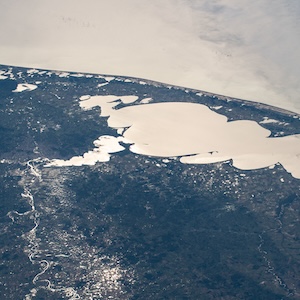Diet-tissue discrimination factors of three neotropical freshwater fishes and a comparison of the trophic position

All claims expressed in this article are solely those of the authors and do not necessarily represent those of their affiliated organizations, or those of the publisher, the editors and the reviewers. Any product that may be evaluated in this article or claim that may be made by its manufacturer is not guaranteed or endorsed by the publisher.
Accepted: 1 December 2023
Authors
The trophic discrimination factor (TDF) is a key parameter for stable isotope analysis and due to a lack of species-specific TDFs, mean universal values have been used, resulting in uncertainties about the trophic position of species and a call for more experiments. In this study, we have addressed the lack of experimental species-specific TDFs conducting three experiments of 128 days each to determine the TDF (muscle and liver) of three species, the piscivore Pseudoplatystoma corruscans (Spix & Agassiz, 1829), and the omnivores Piaractus mesopotamicus (Holmberg, 1887) and Astyanax lacustris (Lütken, 1875), tropical fishes native to the La Plata River basin. Then, we calculated the trophic position (TP) using the mean universal TDF from literature and the species-specific TDF produced in this study for Pseudoplatystoma corruscans. We estimated the TDFs for the three species through experiment and the values found differed from the mean universal TDF in the literature. Moreover, the TP was lower when using the species-specific TDFs. The TP is important for several analyses, including its use in functional diversity. Therefore, we recommend using species-specific TDF values for calculating TP once it differs from the results calculated with mean universal TDF.
Ethics Approval
Diego Fontaneto, National Research Council, Water Research Institute (CNR-IRSA), Verbania Pallanza, ItalyAustralian Rivers Institute (ARI), Griffith University, Brisbane, Australia
How to Cite

This work is licensed under a Creative Commons Attribution-NonCommercial 4.0 International License.






